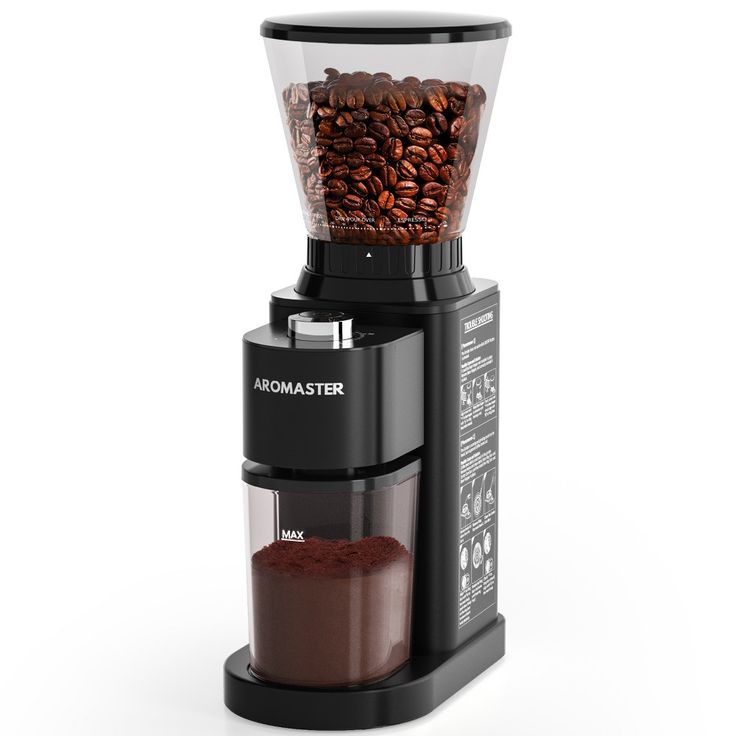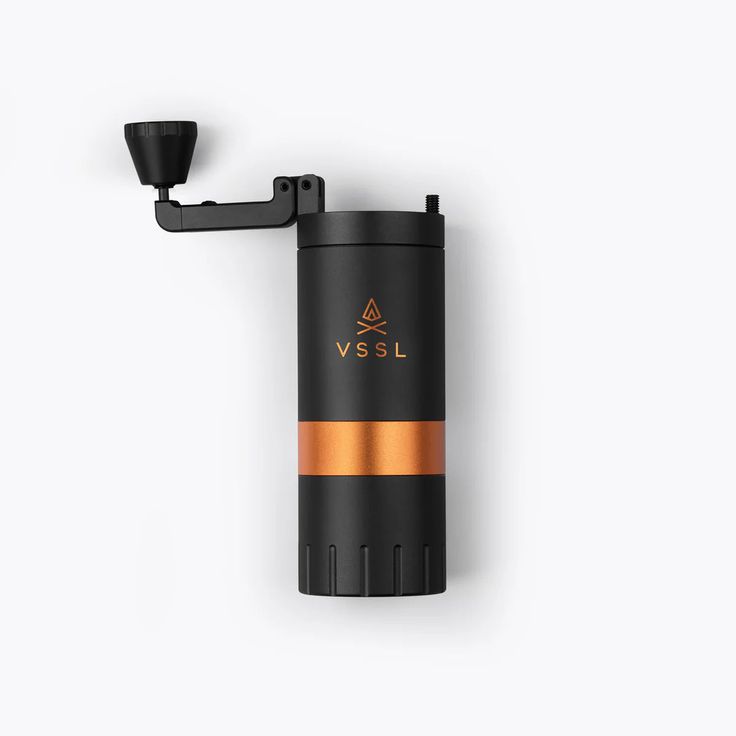Understanding Coffee Grinder Static Electricity
Causes of Static in Coffee Grinders
Static in coffee grinders stems from an imbalance of electrical charges. During the grinding process, coffee beans rub against the grinder’s burrs. This friction transfers electrons between the beans and the grinder, creating an imbalance. Like magnets with identical poles facing each other, the similarly charged grounds and grinder repel. This repulsion leads to grounds clinging to anything they encounter, including the grinder’s walls and your kitchen counter. Dry environments with low humidity exacerbate the situation by reducing electrical conductivity in the air. How to remove static from coffee grinder?

Effects of Static on Coffee Grinding
Static affects the consistency of your ground coffee. It can cause a mess on your countertops as grounds fly out of the grinder. Static also leads to some coffee grounds sticking to the grinder parts, which may change the weight of coffee used in brewing. This could result in an inaccurate coffee-to-water ratio, impacting the flavor and strength of your coffee. Lastly, static can be a nuisance, complicating the cleaning process and making your coffee routine less enjoyable.
Practical Tips to Reduce Static in Your Grinder
Static from coffee grinders can be frustrating, but there are ways to manage it effectively. These methods differ in complexity and suitability depending on your grinder type and grinding habits.
The Ross Droplet Technique Explained
This popular method involves adding a tiny amount of water to coffee beans before grinding. The moisture helps balance the electrical charges and reduces static. Just use a wet spoon or your finger to stir the beans before grinding. It’s a simple step that can significantly cut down on static issues.
Utilizing Anti-Static Sprays and Additives
Special anti-static sprays or additives are available for coffee grinders. When applied to beans or the grinder’s burrs, these products can help reduce static electricity. Apply these sprays lightly to ensure they do not affect your machine’s performance or coffee flavor.
Adjusting Grinder Materials and Technology
Using grinders with anti-static materials, like ceramic or certain metals, can also decrease static issues. Look for grinders that feature these materials, especially in the burrs and containers. You might also consider upgrading to a grinder with built-in anti-static technology for a long-term solution.
Step-by-Step Guide to Implementing the Ross Droplet Technique
Getting rid of pesky static in your coffee grinder can be as simple as a few drops of water. This method, known as the Ross Droplet Technique, can significantly reduce static cling during grinding. Here’s a step-by-step guide on how to implement this technique effectively.
Preparing Your Coffee Beans
First, ensure your coffee beans are dry and ready for grinding. Accurately measure the amount needed for your brew to avoid waste. This preparation prevents any flavor loss when you later add water drops.
The Process of Adding Water Droplets
Lightly moisten a teaspoon or your fingertips with clean water. Sprinkle around two to three droplets of water onto the beans. Do this right before grinding to ensure effectiveness. The added moisture balances the electrical charges, thus minimizing static. After adding the droplets, stir the beans gently to distribute the moisture evenly. Now, proceed to grind your coffee as usual. You’ll notice less mess and fewer grounds escaping your grinder.

Alternative Methods to Combat Grinder Static
Combatting grinder static can be critical for a clean and hassle-free coffee-making experience. Besides using the Ross Droplet Technique, there are other simple but effective methods that can also prevent static in your coffee grinder.
Grinding Coffee in a Metal Container
A metallic container for coffee grounds can be beneficial due to metal’s conductive properties. Unlike plastic, which is an insulator and can exacerbate static issues, metal helps to neutralize electrical charges. If you find your grinder’s static to be troublesome, try using a grinder with a metal grounds bin or transfer your coffee to a metal container immediately after grinding.
Allowing Grounds to Settle Before Removal
Static charges can diminish over time, so patience can be a virtue in this situation. After grinding, let your coffee grounds rest for a few minutes before transferring them. This period allows static electricity to naturally dissipate. Gently tap the side of the container before opening it to knock off any clinging grounds. This method doesn’t require any extra tools and can make a significant difference in reducing mess.
Long-Term Solutions for Static-Free Grinding
Finding a long-term fix for static in your coffee grinder is key for a better brewing experience. Two main approaches help reduce static: choosing the right grinder design and understanding environmental influences.
Choosing the Right Grinder Design
Selecting the right grinder can have a huge impact on static. Look for models with materials that don’t encourage static. Ceramic and stainless steel are wise choices. Certain grinders come with anti-static features built-in. These may cost more but can be worth it in the long run. Keep an eye out for these options when shopping for a new grinder.
Environmental Factors That Affect Static Build-Up
Your grinding environment plays a role in static build-up. High humidity reduces static, while dry air increases it. Use a humidifier or keep fresh plants in your grinding area to add moisture to the air. Try to avoid grinding when air is particularly dry, such as during winter. Be mindful of these factors and adjust your grinding habits and environment accordingly.

Maintaining Your Grinder to Prevent Static
Maintaining your coffee grinder properly can greatly minimize static buildup. This section provides essential tips on regular maintenance and ideal storage practices.
Routine Cleaning and Care
Frequent cleaning is critical to prevent static in your coffee grinder. Accumulated coffee residues can promote static electricity. Cleaning your grinder after each use, or at least weekly, is advisable. Key steps include:
- Remove and empty the grind chamber completely.
- Use a soft brush or a cotton swab for cleaning the burrs and chamber.
- Wipe the exterior with a damp cloth to eliminate dust or coffee stains.
These steps help maintain performance and reduce static issues.
Proper Grinder Storage Practices
Storing your coffee grinder correctly also helps in preventing static. Here are best practices for grinder storage:
- Store the grinder in a cool, dry place away from direct sunlight.
- Keep it in a closed cabinet or drawer to limit dust and debris exposure.
- Ensure the grinder is always unplugged and switched off during storage.
By adhering to these storage guidelines, you can extend your grinder’s life and keep static at bay.
Final Thoughts on Achieving a Static-Free Coffee Routine
Eliminating static from your coffee grinder is possible with proper techniques and care. By implementing tips such as the Ross Droplet Technique, cleaning regularly, and choosing the right grinder, you can enjoy a mess-free grinding experience.
Recap of Effective Anti-Static Techniques
Let’s review the strategies to manage grinder static:
- Use the Ross Droplet Technique by adding a few drops of water to your beans before grinding.
- Try anti-static sprays or additives for a quick fix.
- Select grinders made from materials like ceramic or stainless steel that minimize static.
- Allow grounds to settle after grinding before opening the bin.
- Clean your grinder frequently and store it in a dry, stable environment.
These steps help reduce static build-up and make coffee grinding cleaner and more enjoyable.
The Benefits of a Clean Grinding Experience
A static-free grinder provides many advantages:
- It ensures accurate coffee measurements and consistent flavor.
- It simplifies cleaning and saves time.
- It improves the overall coffee-making experience, creating a smoother routine.
Investing in a static-free coffee routine is well worth it. A little bit of maintenance and the right techniques can make your mornings brighter and your coffee better.